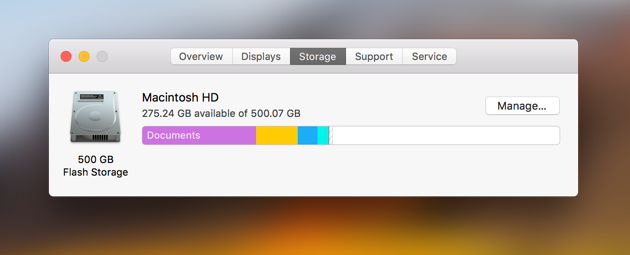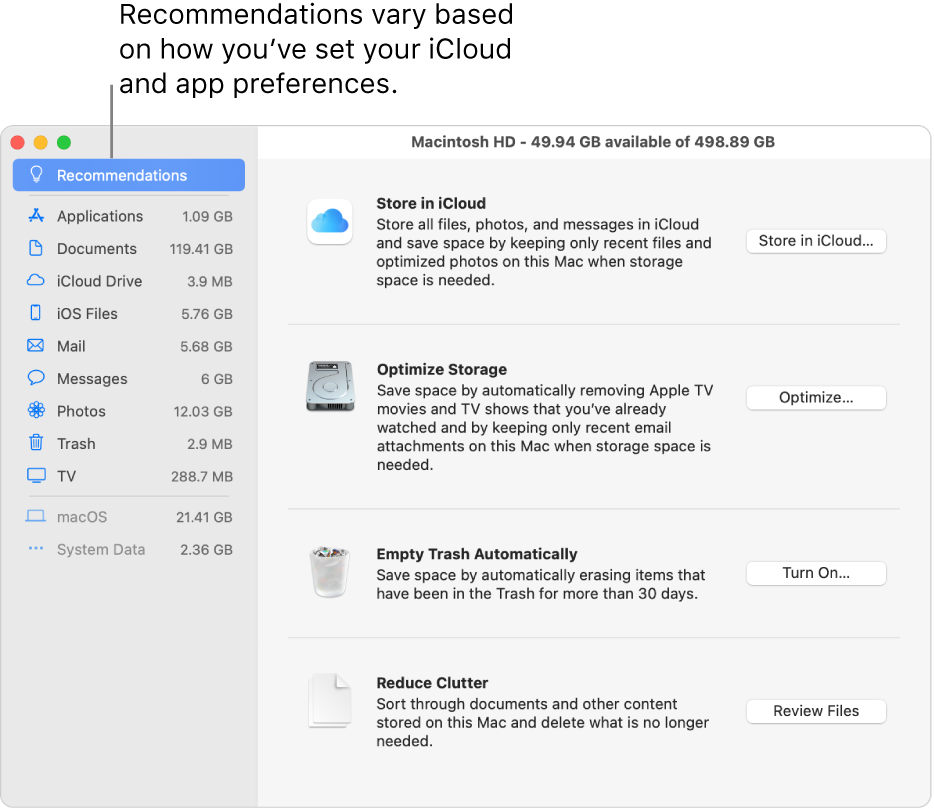


- #How to manage storage on mac os x how to
- #How to manage storage on mac os x mac os x
- #How to manage storage on mac os x free

#How to manage storage on mac os x free
Available storage space includes free storage space and purgeable disk caches (disk space might be both available and used at the same time). Free storage space is physically open space on a disk. The remaining space is free storage space. You can manage your data that falls outside the other categories using Finder or the 3rd party apps that created it. The contents are managed by macOS, and the category varies in size depending on the current state of your Mac. Be sure to Empty the Trash to recover the space.
#How to manage storage on mac os x how to
What is 'Other' and 'Purgeable' in About This Mac Files That Make Up the 'Other' Storage Category, and How to Remove Them Free up storage space on your Mac.
#How to manage storage on mac os x mac os x
You can’t manage the contents of this category. Also, see Freeing space on your Mac OS X startup disk. Also included are temporary files, fonts, app support files, and plug-ins. This category primarily includes files and data used by the system, such as log files, caches, VM files, and other runtime system resources. System Data: Contains files that don’t fall into the categories listed here. Examples include Mail, Terminal, and Calculator. MacOS: Contains macOS system applications and files. Other Users: Contains files created and modified by other user accounts on your Mac. Note: If you partitioned your hard disk, Trash size is provided for the Trash on the disk macOS is installed on (the startup volume). Trash: Contains items you deleted (items deleted from iCloud Drive are not included in the amount of storage space). Photos: Contains your System Photo Library (see the Apple Support article Designate a System Photo Library in Photos). Music Creation: Contains content from GarageBand, Logic, and MainStage. Messages: Contains content from Messages conversations, including attachments. TV, Music, Books, and Podcasts: Each app category contains purchases from that specific app, which can be removed from your Mac and downloaded again. IOS Files: Contains iOS backups and firmware. It may also contain files in your Desktop and Documents folders if you store them in iCloud Drive. ICloud Drive: Contains all files stored in iCloud Drive. It also includes videos and photos that are not managed by your photo library (for example, an image that a friend shares with you using AirDrop). Note: If you partitioned your hard disk, this category shows the amount of storage for apps installed on the macOS partition (the startup disk).ĭocuments: Contains files in your home folder that aren’t included in other categories, such as Pages documents and PDFs.


 0 kommentar(er)
0 kommentar(er)
